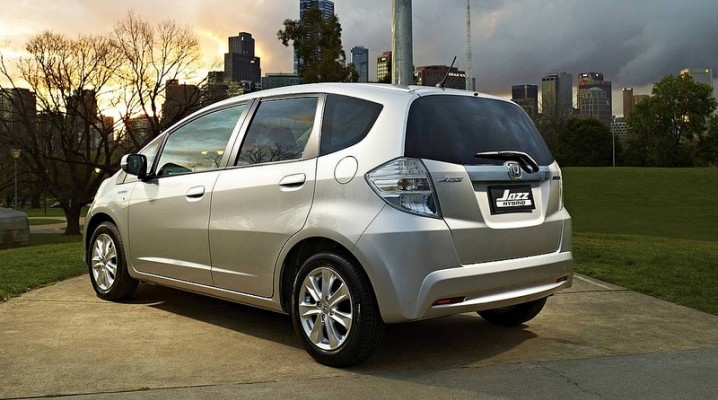As we mentioned in a previous article, the price of hybrid cars might increase in Malaysia. Now the government has announced that it is ending Malaysian tax exemptions on fully imported electric and hybrid cars. Mustapa Mohamed, the International Trade and Industry Minister of Malaysia, announced that the government had taken this drastic step as the original purpose behind offering such tax exemptions had not been fulfilled.
The Malaysian government first started offering tax exemptions on imported electric and hybrid cars in an attempt to get automobile manufacturers to invest in Malaysia and to assemble their vehicles in the country. However, this incentive produced no significant results in the past four years, prompting the government to scrap the incentives altogether.
End of Tax Exemption is Part of the National Automotive Policy
This decision to end tax breaks was a part of the National Automotive Policy (NAP) that was revealed on January 20, 2014. As per what Mr. Mustapa said, as the country and its automotive industry had not gained significantly from offering these tax breaks, the policy was discontinued.
Automobile manufacturers that want to take advantage of the tax exemptions must assemble their hybrid and electric vehicles in Malaysia. One such example he cited was the Honda Jazz manufacturing factory set up in Malacca. He went on to add that the MITI (International Trade and Industry Ministry) and other government agencies are in discussions with three automobile manufacturers to begin CKD (completely knocked down) assembly operations in the country. This will hopefully bring in a lot more investments to Malaysia.
Currently the excise duties on CBU (completely built units) of hybrid vehicles can be anywhere from 65 percent to 105 percent depending on the engine displacement. The excise duties on electric vehicles are calculated depending on the power output of the vehicles. Mr. Mustapa also added that the excise duties will not be revised as of now by the government. The excise duties will be revised if and only when the fiscal environment of the country permits it.
Revision of the taxes will be difficult as a result of the current budget deficit faced by the government and Putrajaya will only consider revising the taxes and excise duties if the financial situation improves.
Planned roadmap for the Malaysian auto industry
The government had promised that it would reduce the prices of automobiles in Malaysia, but the NAP 3.0 proved to be a shocker. In an attempt to assure the people, Mr. Mustapa said that the efforts to reduce the prices of automobiles in the country would be part of the Car Price Reduction Framework. This framework aims to reduce the prices of cars by 20% to 30% gradually over the next five years. He also promised that the government is working hard to provide more competitively priced vehicles in this year.
The aim of the NAP is to revive the auto industry in Malaysia and to increase the production of energy efficient cars in the country. The government also wants to focus more on the production of energy efficient electric vehicles in the country so that by the year 2020, about 80 percent of all vehicles manufactured in Malaysia will be energy efficient.
Under the EEV (energy efficient vehicles) initiative, the government is focusing on introducing the Euro 4 grade fuel to the country that works well with such energy efficient vehicles. The ultimate decision of the government regarding this issue will be known in two months time. Increasing employment in the automotive industry in Malaysia is also a major concern under the roadmap. The aim is to replace most of the foreign workers in the Malaysian automotive industry with semi-skilled and skilled labor from within the country.
RELATED:
SEE ALSO:
- Electric Cars in Malaysia: An Overview
- 5 Great Sites for Buying Used Cars in Malaysia
- 10 Tips for Buying a Used Car in Malaysia
READ MORE ABOUT: Car Tech in Malaysia
Photo credit: NRMA New Cars / Foter.com / CC BY
"ExpatGo welcomes and encourages comments, input, and divergent opinions. However, we kindly request that you use suitable language in your comments, and refrain from any sort of personal attack, hate speech, or disparaging rhetoric. Comments not in line with this are subject to removal from the site. "



















I believe the real culprits are UMW, Tan Chong & PNB, even with tax exemptions their cars still expensive. Look at duty free island such as Langkawi, prices of cars are still high.
Interesting view. One thing I don’t understand about the tax exemption is if the government’s goal was to get these car manufactures to set-up factories in Malaysia so they would locally assemble them why didn’t Malaysia only offer tax exemptions on those cars in the first place (CKD cars). I don’t see how offering tax exemption on completely built units (CBU) would incentivize the car manufactures to assemble them locally instead.
Actually the gov are targeting 30% price reduction on CKDs by 2018.
My noob understanding from NAP 2014 are:
1) No tax exemptions (excise & import duty).
2) But manufacturers get more incentives through local assembly, local parts etc.
I may be wrong though
Hi Marudia – thanks for the reply.
From my understanding, the tax exemption will continue for locally assembled hybrid cars until 31 Dec 2015 and for locally assembled electric cars until 31 December 2017.
Both Astroawani and The Edge state this:
http://english.astroawani.com/news/show/revised-national-automotive-policy-nap-seeks-to-further-liberalise-the-auto-sector-28669
http://www.theedgemalaysia.com/highlights/271828-highlight-car-prices-to-drop-20-30-by-2018.html
And your right, it does seem the government is targeting a 30% price reduction on CKDs by 2018.
However, I still don’t exactly understand why the government originally offered a tax incentive for importing completely built units, if the original goal was to get the manufactures to set up factories for assembling locally.